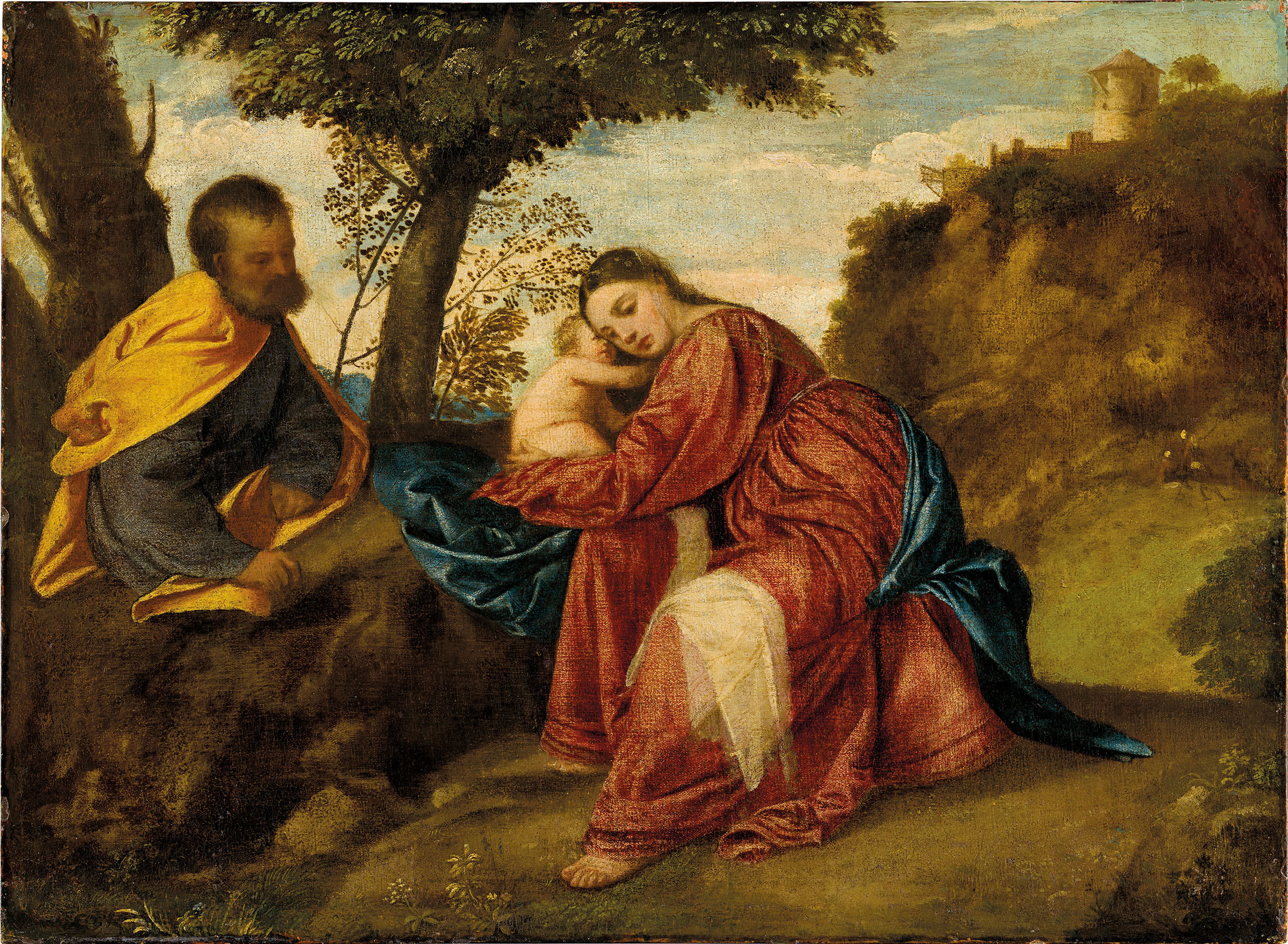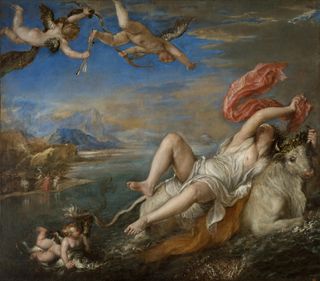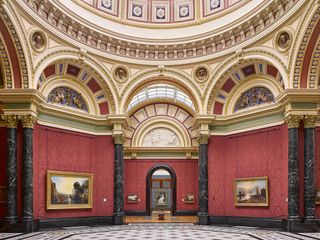The Titian masterpiece found in a plastic bag at a London bus stop has sold for £17.6 million
The painting that secured Titian’s reputation as 'the greatest painter of the Venetian Renaissance' is going up for sale, 30 years after it was recovered in a carrier bag in the most unlikely of spots.


A Titian masterpiece with a tumultuous past headlined the Christie’s Old Masters Part I sale on July 2 when it went under the hammer, selling for £17,560,000. With the premium added, the buyer will pay just over £20.5 million.
Rest on the Flight into Egypt, depicting the Holy Family in repose in a bucolic landscape, was painted when Titian was only about 20 years old; since then, it has passed through the ownership of Archdukes and Holy Roman Emperors, and was looted by Napoleon’s troops in Vienna, Austria, in 1809. Acquired by the 4th Marquess of Bath in 1878, it had been in the collection of his Wiltshire estate, Longleat, ever since — more or less.
‘The picture has a remarkably illustrious history, but it is its theft from Longleat in 1995 that seems to have captured the wider public’s imagination,’ explains Christie’s international deputy chairman Henry Pettifer. ‘It was famously stolen from the first-floor State Drawing Room and was missing for seven years until it was found, in 2002, in a carrier bag at a London bus stop, thankfully unharmed, after a reward was offered.’
Rest on the Flight into Egypt was returned to Longleat, and has since been lent only once (to the National Gallery in 2012). Almost 150 years since it last came up for auction, this is a rare chance to see the work close-up, and in the words of Christie’s Maja Markovic, ‘appreciate the pictorial poetry that secured Titian’s reputation as the greatest painter of the Venetian Renaissance.’
As we understand it, there is some mystery over whether a ransom demand was ever issued, or whether the widely publicised £100,000 reward was ever paid. What we do know is that it was recovered by a former Scotland Yard detective chief inspector, Charles Hill. The same detective is also credited with recovering Edvard Munch’s The Scream, stolen that same decade.
‘This is the most important work by Titian to come to the auction market in more than a generation and one of the very few masterpieces by the artist remaining in private hands,’ said Andrew Fletcher, Christie’s global head of Old Masters, ahead of the sale. ‘It is a truly outstanding example of the artist’s pioneering approach to both the use of colour and the representation of the human form in the natural world.’
The Christie’s website has more details of this and the other lots, which included Mares and Foals in an extensive landscape by George Stubbs and The Madonna of the Cherries, painted around 1520 by Quentin Metsys, which sold for £10,660,000. Metsys was the founding figure of Antwerp School, whose later followers included Peter Paul Rubens and Anthony van Dyck.
Sign up for the Country Life Newsletter
Exquisite houses, the beauty of Nature, and how to get the most from your life, straight to your inbox.

In Focus: The six ‘poems in paint’ by Titian that are in the same room for the first time in 500 years
Michael Prodger heralds the ‘Titian: Love, Desire, Death’ exhibition at the National Gallery, a once-in-a-lifetime collection of a group of

The chair of the National Gallery names his favourite from among the 2,300 masterpieces — and it will come as a bit of a shock
As the National Gallery turns 200, the chair of its board of trustees, John Booth, chooses his favourite painting.
Annunciata grew up in the wilds of Lancashire and now lives in Hampshire with a husband, two daughters and an awful pug called Parsley. She’s been floating round the Country Life office for more than a decade, her work winning the Property Magazine of the Year Award in 2022 (Property Press Awards). Before that, she had a two-year stint writing ‘all kinds of fiction’ for The Sunday Times Travel Magazine, worked in internal comms for Country Life’s publisher (which has had many names in recent years but was then called IPC Media), and spent another year researching for a historical biographer, whose then primary focus was Graham Greene and John Henry Newman and whose filing system was a collection of wardrobes and chests of drawers filled with torn scraps of paper. During this time, she regularly gave tours of 17th-century Milton Manor, Oxfordshire, which may or may not have been designed by Inigo Jones, and co-founded a literary, art and music festival, at which Johnny Flynn headlined. When not writing and editing for Country Life, Annunciata is also a director of TIN MAN ART, a contemporary art gallery founded in 2021 by her husband, James Elwes.
-
 If heaven is on earth, it might be in this home with a converted chapel that is now a swimming pool
If heaven is on earth, it might be in this home with a converted chapel that is now a swimming pool5 Wood Barton Town House is part of an exclusive 80-acre development in Devon that also comes with fishing rights on the River Avon and four bedrooms.
By James Fisher Published
-
 An Italian-inspired recipe for lemon-butter pasta shells with spring greens, ricotta and pangrattato
An Italian-inspired recipe for lemon-butter pasta shells with spring greens, ricotta and pangrattatoSpring greens are just about to come into their own, so our Kitchen Garden columnist reveals exactly what to do with them.
By Melanie Johnson Published
